Hey, juniors! About to dive into your college search?
First things first: There’s no right (or wrong) way to do it. Maybe you’ll manage the whole process on your own while bingeing shows deep into the night on Netflix. Or you might be more comfortable gathering family members and gleaning opinions until you find the colleges that feel right. Whatever your approach, it’s not tough to get going, and we’re here to help. So proceed with exploration in your heart!
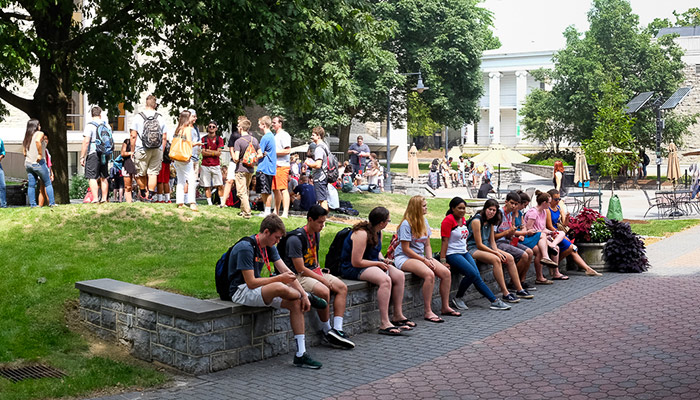
“Where Am I Going?”
That's a big question, so here are a few others to ask yourself to help narrow down your options. And they’re easy but are just as big as the big one:
- Where do I want to go to college? In my hometown, within easy driving distance to my family or across the country or world? Huge public university or small private college? Determine that, and then ask yourself:
- Which schools can I get into? This may or may not narrow the list further.
- And, finally, can I afford the schools remaining on the list?
That last question strikes fear into the hearts of pretty much everyone, but it shouldn’t. At Dickinson, because of generous financial aid, the average student graduates with around $22,000 in debt, $10,000 less than what you’d find with the average private college. So don’t get too hung up on that one just yet. (But to get started on some concrete thinking, get into our cost calculators, which will give you a good idea of where you might stand financially.)
When you talk to your friends about college, keep in mind that what’s good for one student may not be good for another. So keep an open mind, and avoid peer pressure.
And for now, it’s more fun (and productive) to start exploring the colleges that have made your list (so far). You can of course see colleges online—e.g., here’s a tour of Dickinson’s dorm life and an aerial tour of campus—and some of the content has the power to get you pretty excited (and if Dickinson is on your list, this video will be one of them!).
But if you’re able, the way to go is live and in person. So …
Cast a Wide Net
When looking for your college home, start local and explore a variety of colleges. This way you’ll get a sense of what you’re looking for before you extend your search across the nation (or world!).
Make the visit fun—go to a sporting event or a performance.
Dickinson has a large array of both virtual and in-person visit options to let you explore our 237-year-old campus. But regardless of the campus you visit, there are some things you might want to keep in mind:
- If some colleges you’re interested in are close to each other, hit more than one per day (but no more than two).
- Use a system that works for you: Take lots of notes and photos, shoot some video, create a spreadsheet, etc.
- Connect with a member of the admissions staff before, during or after your visit.
- Really dig around: Peruse the library, hang out in one of the social spaces, eat in the cafeteria and/or attend a sporting event, lecture or gallery talk.
Writing the Application Essay
No matter where you apply, you’ll be writing an essay to accompany the application. Here’s a quick link with some tips, but give this video a look before diving in. It details some key points to digest as you ramp up to your essay.
And now for a quick-and-easy list of dos and don’ts on how to approach writing a winning essay, in case you digest bullet lists better than videos:
Do
- Read the instructions and respond to the prompt. It’s obvious, but … maybe it’s not!
- Give yourself plenty of time, and be reflective.
- Tell your story, and tell it in a genuine way: What are you passionate about, what do you value, how do you thrive?
- Address areas for growth head-on.
- Focus and organize your thoughts and achievements—write about a blade of grass, not a field of grass.
- Ask yourself, “What do I want the reader to know about me after reading this essay?”
Don’t
- Lose your authentic voice.
- Take inappropriate risks.
- Draw overly simplistic conclusions.
- Use another college’s name (this happens more than you’d think).
- Make simple grammatical and spelling errors.
When you’re done, have people read it, people whose opinions you trust. Getting other eyes on your essay will help you see things you’ve missed. Because it’s pretty likely you’ll have looked at it too long by the end to see any missteps.
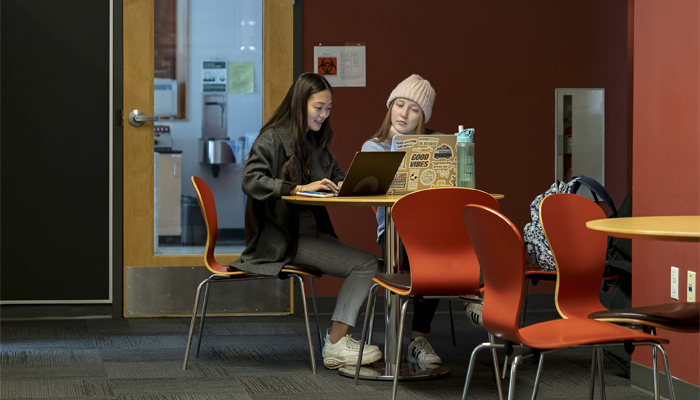
Good in a Room: The College Interview
So you’ve found the colleges that feel right, finished your essay and are going to apply (which really just means getting your forms together online and hitting submit). But don’t forget about the in-person (or virtual) interview. This is where you as an applicant sit down with a member of a college’s admissions team and shine (!).
You might ask, Why do some students have an interview and some don’t? Well, students interview for lots of reasons:
- To add an additional layer to an application that tells the college what transcripts etc. won’t.
- To “demonstrate interest,” which means you’ve connected with the college in discernable ways.
- To explain a challenging situation or circumstance.
- To add additional detail/color around specific involvement or passions.
At Dickinson, in-person interviews typically last 45 minutes to an hour, with virtual interviews a little shorter. Once you’ve decided to do a college interview, there are several things you can do to prepare:
- Read any and all instructions.
- Dress the part.
- Do your research about the college in advance, and explore the college’s website for news and events that might be important.
- Generate a few specific questions in advance of the interview.
- Try to lean toward evidence-based responses.
- Practice!
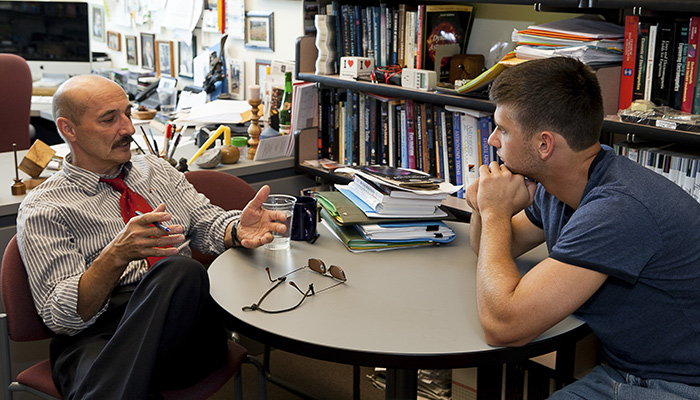
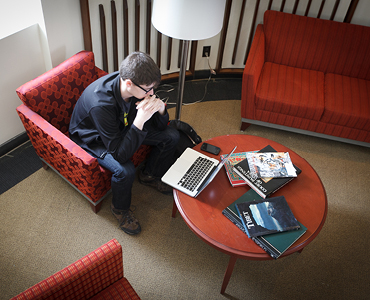
Virtual Interviews
Register for an interview with one of our admissions counselors or trained student interviews.
“What’s a liberal-arts college all about?”
You might not be familiar with the term “liberal arts,” but you’re probably familiar with what it means. A liberal-arts education offers students a broad-based curriculum, one that doesn’t train you for a specific narrow track in life but instead for life itself.
What does that mean? Simply, you’ll learn about pretty much everything, so when everything comes at you in your postgraduate life (and it’s likely it will), you’ll be ready. The liberal arts are continually called out in the media for their undeniably winning approach to creating the foundation for a successful professional life, so click around and see what’s being said out there.
Liberal-arts colleges tend to be smaller than public universities, have fewer students in every classroom (the average class size at Dickinson is 14 students) and tighter-knit communities. These are just some of the reasons why to choose Dickinson, which gives students the leg up they need to thrive once they graduate.
“What’s your major?”
This is the question you’ll confront continually for four straight years, because once you’re in college everyone begins every conversation with it. But right now, here’s how you might start to answer it: Dig into your high school experience.
- What’s been most exciting about your experience in high school?
- What’s your favorite class? What about it do you find most engaging?
- What activities or interests would like to further explore or pursue?
You might already have an idea of what you want to major in, but if not, these questions should get your brain moving in the right direction. Your interests now might not be your interests in a year or five or 10, but if you know what you like and why, your path will start to make more sense.
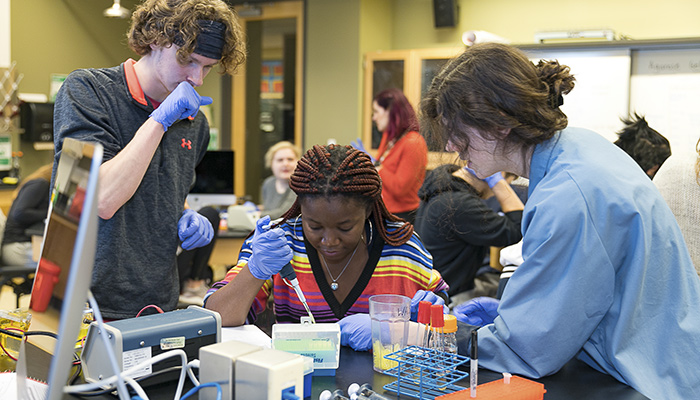
And there we have it: Your quick guide to ramping up to college as a high school junior. We hope this was helpful, and we encourage you to click around below to explore your ...
NEXT MOVES
- Explore the Office of Admissions
- Visit, in person or virtually
- See what college is really like, from our students
- First-year FAQ
- Apply!